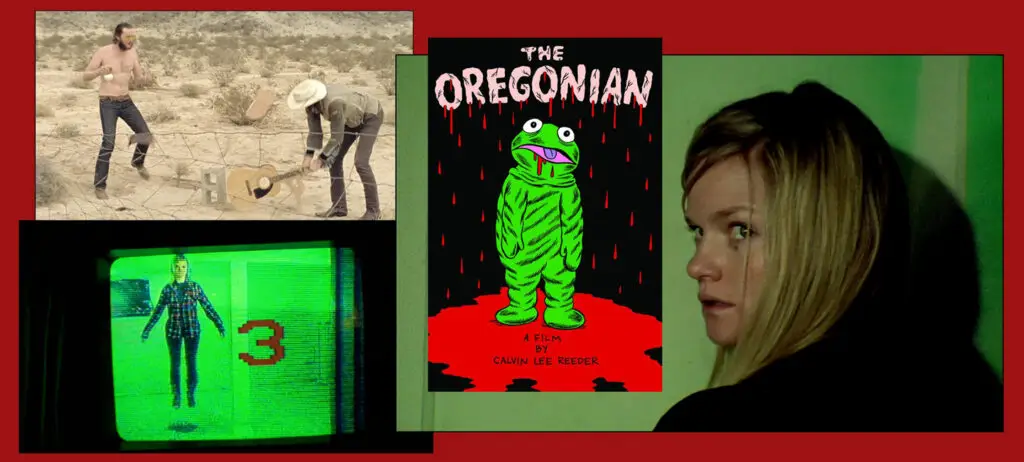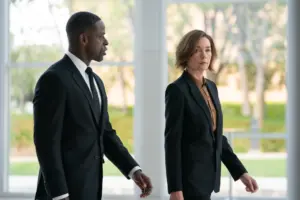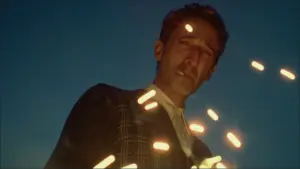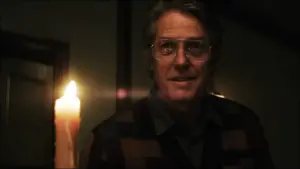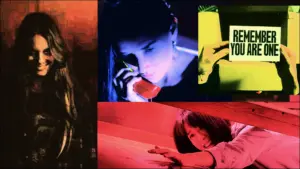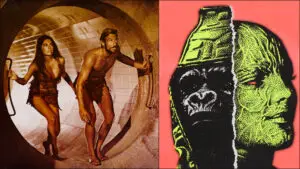When reviewing a film it’s customary to start with a partial plot summary. The Oregonian (2011) is a critic’s dream in this regard, as it has almost no discernible plot. Rather, in place of plot it has the kind of story structure that your drunken uncle, having just stolen and smoked all your 80% THC weed, creates when trying to relate the contents of the commercial about a traffic accident he just saw while unfortunately conflating it with elements from his divorce and his last three head injuries.
Unlike Uncle Luther’s story, though, the movie does have a beginning and an end. It starts with actress Lindsay Pulsipher, who’s way too professional to be in a movie with a budget of 45 dollars, flashing forward from a scene of idyllic farm life where, like all good horse girls, she steals a drunk guy’s wallet and booze and then takes off in a car to for a concussion-dream journey through an unnamed land. Let’s assume, though, that it’s Oregon, but an imaginary, abandoned, rural Oregon that’s the grunge equivalent of a Deliverance-style backwoods Georgia.
A series of picaresque encounters with people who seem to be dead or perhaps extremely wasted or just really into theater exercises leads Pulsipher from a bloody car wreck to an ambiguous kidnapping to a disturbing series of encounters with someone wearing the saddest Grover the Muppet costume ever created. Along the way she meets a reticient and maybe-dead trucker who gives her a ride to the place she’s not going, a woman with bleeding gums who can’t stop smiling, and a group of dirtbag hippies who, if they’d only practice their instruments, could be the most popular Seattle band of 1992.
All of this works with a disturbingly effective beauty. Even though nothing makes sense, it hangs together both thematically and stylistically. A big part of this is the music. In the last twenty years the idea that music should be used sparingly, to create counterpoint, or be just mildly suggestive, or enhance rather than determine mood, has been tossed in the wastebasket along with the middle class, civil discourse and respect for expertise. Instead, we have Christopher Nolan turning up endless, booming drones by the likes of Hans Zimmer and Ludwig Göransson so we know exactly how we’re supposed to feel in every scene. He might as well just hold up a sign that says “Important moment” or “feel sad here!” or “scary!” or “sorry you can’t hear the dialogue.”
Director Calvin Reeder’s musical choices are creepy, but they don’t overwhelm the film, and they’re often turned way down and used to enhance environmental sounds. Train whistles, soggy footsteps, churning rivers, the buzzing of insects, wind and rain all play the role that they play in real life: providing natural signs of meaning. It’s this that’s so lacking in contemporary soundtracks: the sounds of silence, the sound that we’d hear if we turned off the music and shut up for a minute. By playing with these sounds, Reeder creates a much more evocative aural landscape than the manipulative minimalism so popular in movies Hollywood craps into the theater in autumn like little dogs sitting up and begging for Oscars.
Reeder and cinematographer Ryan Adams (not that Ryan Adams) carry on the creepy naturalness and surrealism with selective blurring, focusing off-character, reduced frame rate, double exposure and staccato jumps to natural phenomena like tree galls, mushrooms, early autumn decay and woods delineated by old power lines. Every shot is framed with a kind of asymmetrical balance. Tiny objects on the ground catch your attention and then are abandoned, and then, at times, reappear larger, more menacing, or not at all.
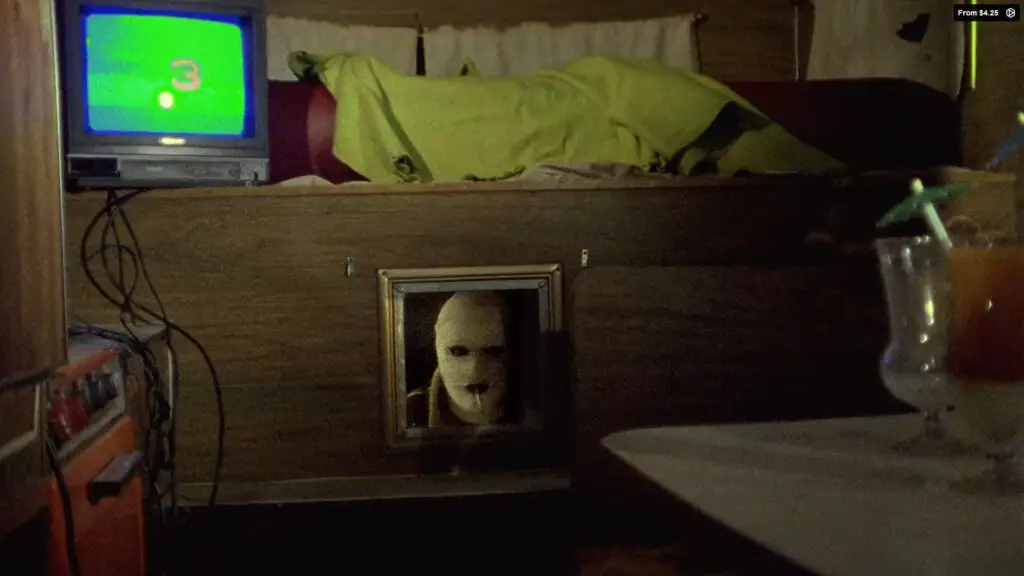
The low-resolution format makes a lot of this feel real in a way that high-end digital cinema just can’t. Large-budget filmmakers now have access to an unprecedented number of tools to tweak, color, sharpen, and otherwise manipulate and process each image, and they do so with the fury of high school kids downloading AI-written term papers, producing a generic sameness to general release movies. But all that resolution somehow makes films seem less real—it’s like nothing our human eyes could take in without aid. Somehow, an old Polaroid feels more like an actual artifact than any 8.8 megapixel monstrosity.
Without the basket of digital enhancements and high-end effects, directors will either be forced to make crap, or to think carefully about how to make art. Reeder’s tiny budget pushes his creativity here. He can’t CGI in a fleet of satanic space ships, so he figures out how to make chicken wire, bath mats with Jesus printed on them, abandoned playgrounds and shacks full of hand-knit couch covers into an all-too-real nightmare.
The focus on sound and texture works with the plotlessness. It’s frightening, but also gripping and entertaining, because you never know what’s going to happen next, or what you might see, or if you’ll ever see it again. There’s something about plot that narrows possibility: by the end of almost any standard film you’re reduced to handful of possible conclusions, so the ending is never much of a surprise. And, because mass-market films are made for mass-market people, they go out of their way to explain every element of the story. This kind of handholding, for me, gets tiresome, and makes its mark in the way critics walk away from Barbie or Oppenheimer with one of 2 or 3 interpretations, at most.
The Oregonian doesn’t care if you understand it, laugh at it, or are repulsed by it. Pretty much any reaction is valid because it doesn’t have giant signposts telling you how to feel or expository dialogue to explain what’s happening. But it’s far more engaging and disturbing in an aesthetically compelling way than gore fests or “suspense” films with thrumming soundtracks. Instead of individual scares there’s a kind of gestalt horror: every element on the screen, while looking painfully real in the way a run-down suburban crack house looks real, carries a vague but weirdly coherent meaning that makes the film seem like it has some underlying clarity which, like the truths of all real occurrences, you only see a tiny part of.
The Oregonian is probably not for everyone, but it’s only an hour and 20 minutes long, so if you’re kind of stoned or have had a serious head injury or went to art school for too many years, or just want to see really well made, low budget cinema that respects the audience’s intelligence, I’d highly recommend it.
(The Oregonian is currently streaming on Roku, YouTube and Amazon Prime, and rentable from AppleTV and Google Play Movie)

